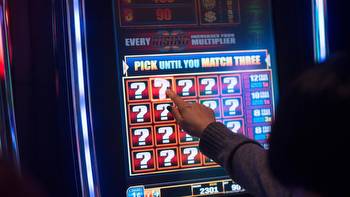DiNapoli Releases Report on Casinos' Impact on Upstate Local Tax Revenues
From 2017 to 2022 New York’s four licensed casinos brought $176 million in gaming tax revenue to host and regional local governments, but only the three smaller towns that host casinos realized significant fiscal benefits relative to their overall revenue, a report from State Comptroller Thomas P. DiNapoli highlights.
“Casinos are not a magic fix that will solve local fiscal challenges,” DiNapoli said. “While casinos have generated local gaming tax revenue, the impacts vary for the communities that receive such revenues. It’s my hope that this report gives state and local officials a clearer perspective that can help potential host communities avoid the pitfalls that arise with misguided expectations about the public benefits of casinos. They are not a sure bet.”
DiNapoli’s 2020 report on gaming revenues showed that all four current casinos — del Lago Resort and Casino, Rivers Casino and Resort, Resorts World Catskills, and Tioga Downs Casino — had fallen well short of the projected gross revenues on which local taxes are levied. Three years later, these revenues and tax contributions continue to lag expectations reaching only 50-60% of initial expectations, with the sole exception of Tioga Downs in the Southern Tier.
Despite the shortfall in expected collections, local governments did benefit, with the three small host towns receiving the most compared to the size of their total revenues. In the host towns — Nichols, Tyre and Thompson — gaming tax revenue made up 30-60% of total revenue, allowing them to dramatically cut property taxes. In contrast, in the larger host city of Schenectady, as well as the four host counties, gaming tax was a much smaller percentage of local revenue, just 1-3% of their total revenue. For regional non-host counties, casino taxes generally amounted to less than 0.5% of their total revenue.
Although the pandemic contributed to the shortfall, with casinos shut down for six months in 2020 followed by capacity restrictions that were not fully lifted until June 2021, all four casinos saw gross gaming revenues exceed pre-pandemic levels in 2022. That did not translate into greater local gaming taxes, however, because state amendments to New York’s gaming law allowed casinos to keep a greater percentage of their gross revenue by asking for cuts in their tax rates for Slot & Electronic Table Games (ETG) to 30%, which three did. A bill to reduce Tioga Downs’ Slot & ETG tax rate to 30% is currently pending Executive approval. The tax cuts reduced collections by a combined $41.9 million in 2022, including $8.4 million that would have gone to local governments.
DiNapoli’s report underscored the importance of realistic fiscal planning by localities regarding expectations for gaming revenues. DiNapoli’s audits of two host towns found issues including budgeting challenges associated with gaming revenue and the need for proper, multi-year financial planning.
For the municipalities which will host the soon-to-be awarded Downstate casinos, an appropriate plan for the new revenue will be key.
The report did not examine the non-financial impacts of hosting a casino on issues like gambling addiction or quality of life issues. Comptroller DiNapoli will be releasing a report that looks at those issues later this year.




































